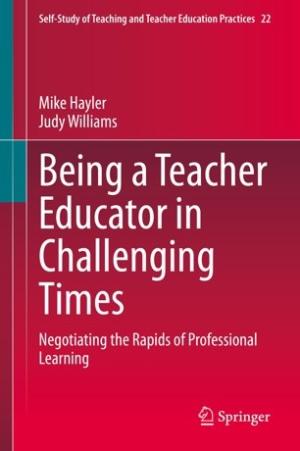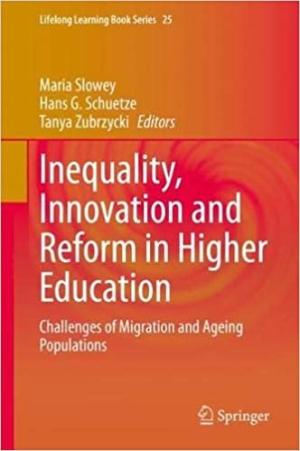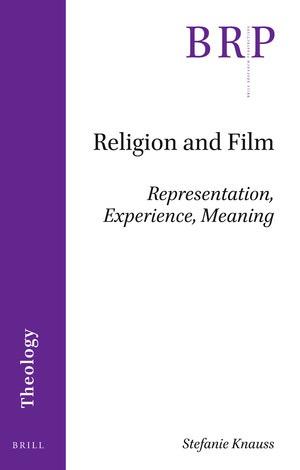Resources
While the mission of theological education remains solid, the institutional turmoil has been exacerbated by the crisis of the pandemic. These two prominent presidents will discuss the ramifications, implications and possibilities for seminaries during this societal upheaval. Additionally, they will discuss the heightened uncertainty of the vocations of religion and theology scholars in the academy. Dr. Nancy Lynne Westfield hosts Dr. Stephen G. Ray, Jr. (Chicago Theological Seminary) and Dr. Angela D. Sims (Colgate Rochester Crozer Divinity School).

An Interview assignment is on my syllabus for my Critical Thinking and Communication class (Gen Ed, required of all sophomores, inquiry based). My course title/inquiry is "A Good Life: What is it? How does one live it?" As we pivoted to remote courses in mid-March and as I began to convert activities and assignments, I wondered about keeping the Interview. How to talk about a good life when life doesn't look so good? As it turned out, the assignment worked. I received some of the strongest, most engaging submissions I've ever read. As one student said, "We (her grandmother was the interview subject) had time together around the kitchen table. She loved my questions and she was tickled to help me with a paper. But I was the lucky one. I heard stories I had never known. And now they are recorded on my phone. What a treasure." Click this link to view the vlog.

Anti-Muslim bias manifests in antagonism or ill will towards Muslims and often builds upon white-supremacist, xenophobic, and racist tropes. Anti-Muslim bias can sometimes manifest as Islamophobia, which is antagonism towards the religion of Islam or towards regions of the world historically associated with Islam. Anti-Muslim bias can be experienced by religiously practicing Muslims as well as those of an ethnic or racial background associated with Muslims. Hence, anti-Muslim bias does not just affect Muslims, it can impact North Africans and Arabs (including Christians) and brown people who present with perceived similar characteristics as Muslims (e.g., Sikhs). White Muslims of non-Arab backgrounds, Black, Latinx, and Muslims of East Asian backgrounds experience the effects of anti-Muslim bias as well. In the North American and European context, there are several motivating factors for anti-Muslim bias. Some of them are explicitly geopolitical, others are rooted in the historic encounter and—in some respects, direct competition—between Islamic and Christian faith-based civilizations. Still others are seemingly rooted in an existential discomfort with human difference. In other words, anti-Muslim bias serves simultaneously as an expedient mobilization technique, as a theological polemic, and as a means to sow animosity and mistrust for personal gain. These motivating factors can overlap and be mutually reinforcing. For instance, many American and European politicians have ignited a political base by that is largely white and Christian by appealing to stereotypes of Muslims as invaders who are frenzied, culturally unsophisticated, nonsensical actors with a propensity toward violence. The white, Christian-identified politicians can then depict themselves as savior–protectors who are poised to guard territory, religion, and national identity. In this way, anti-Muslim bias becomes a lever of ethnic nationalism. Such strains of anti-Muslim bias have foreign policy implications beyond their domestic utility; it is much easier to wage a war in a territory if constituents supporting the war effort believe that their enemy is culturally and religiously inferior and a legitimate existential threat. Likewise, it becomes easier to morally justify news of mass civilian casualties abroad if those bearing the brunt of the suffering are seen as not like “us” in fundamental ways. Their suffering then becomes, in this paradigm, an unfortunate but ultimately unavoidable result of “our” need to protect “our values” from being attacked. Thus, the gross prejudice and bigotry undergirding much anti-Muslim and anti-Islamic sentiment is readily disguised as noble patriotism. Political discourses that are hostile toward Islam and Muslims—and especially those promulgated and propagated at a national level—readily feed into everyday prejudices and implicit biases against the individuals of minority race, ethnicity, and/or religion; after all, these minorities only tenuously belong to the conceived “we” of the dominant national identity. False narratives, gross generalizations, and academically ungrounded analyses all serve to support notions that Muslims, or those appearing Muslim, are to be regarded circumspectly. Often anti-Muslim and anti-Islamic sentiments are promoted with coordinated talking points through prominent media outlets and personalities who stand to benefit personally from stoking the flames of bigotry. Rather than appearing as hate-mongers, trafficking in destructive stereotypes, these media personalities can cast themselves as patriots who stand for freedom and democracy over and against the repression and theocracy supposedly valued by Muslims (as a result of their purported collective disposition and religiously mandated convictions). Anti-Muslim bias is a social justice issue because it tears at the civic fabric in a way that exacerbates ideological divides and makes minorities particularly vulnerable to the violence of vigilantes and the mentally unstable. It does not just impact civic life. Like other bigotries, it clouds collective moral judgement. Education about anti-Muslim bias and Islamophobia should include discussions of its effects on targeted individuals and groups, clarification of the stereotypes and false information that propel it, and exploration of the media and financial networks that enable it. Anti-Muslim bias can be taught in the context of how other large-scale religious and ethnic prejudices have led to blatant injustices, crimes, and other morally questionable actions. The topic of compound social marginalizations, the ways in which gendered stereotypes operate, and the niche roles of so-called native informants are all relevant topics to explore in depth. There are many provocative works on these subjects. For instance, for understanding anti-Muslim biases in the United States, I recommend Stephen Sheehi’s Islamophobia: The Ideological Campaign Against Muslims (2011) which covers the nuances of anti-Muslim sentiment with extensive coverage of the approaches of the Bush and early Obama administrations. I also recommend Peter Morey’s Islamophobia and the Novel (2018) for an exploration of how Islamophobic tropes are imbedded in English literature. Sara R. Farris contributes an excellent analysis of how gendered and racially biased assumptions impact European social policies in her book, In the Name of Women’s Rights (2017). The sheer magnitude of the systemic issues and their complexity can be daunting and even depressing, but many creative and entrepreneurial efforts have taken root to try to ameliorate biases and disparities. In this regard, one of my favorites for classroom use is The Secret Life of Muslims, a short-form, web-based series of first-person documentaries that was Emmy-nominated and a Peabody finalist. I have mainly referenced the American and European context here, but Islamophobia and anti-Muslim bias, of course, have a global reach; at present, India, Myanmar, and China are areas of elevated concern.

Last summer, I packed up our house, defended my dissertation, and moved to the greater New York area to begin my first tenure-track teaching position. There was nothing in new faculty orientation about teaching in a pandemic. However, I find myself drawing from my doctoral experience researching and directing a theological education program in prison as a very present help in this moment of crisis. Here is why. Teaching in prison is to teach in frequent states of crisis and disruption. It was not uncommon to hear of violent assaults or deeply unsettling “shake downs” that left the community enraged. Both of these and worse happened– and more than once. Crisis and disruption were more the norm than moments of structure and peace. I learned during those times that the most essential thing to do was to show up for class. “Showing up” is a pedagogical practice of “being with and for others” in times of crisis. In prison, that meant physically working our way through security checkpoints, gates, and locked doors so we could open physical and metaphorical doors for others. The journey to class was often filled with so many obstacles that it left us all physically and mentally exhausted. But there was an unexplainable source of energy (grace) that came when we all showed up. Showing up was how we, teachers and learners, held together a physical place where those who wanted to gather, could gather. In those times, I learned that showing up in crisis risks encountering human emotion. In crisis, the classroom can become a place where lament and laughter co-exist, weaving in and out of one another in ways impossible to control but necessary for survival. The classroom can be a space where rage gives rise to revelation … or not. I learned that emotions are an essential and expected part of processing crisis and my role as an educator is not to be a therapist or a counselor, but to bear witness. To bear witness in crisis is to be present to the confusing and unpredictable shifts between joy and anger, between light-hearted relief and soul-crushing fear, between wanting to lament and wanting to get on with the lesson of the day. This experience bearing witness to uncomfortable moments of pain, despair, sadness, and rage has, in many ways, prepared me for the present. When my University shifted to remote learning, there was the familiar question of whether or not to have class. The overwhelming response of students was yes. Showing up, even virtually, allowed us to maintain a sense of community and to be present to and with one another as gift, a balm. Students wanted a place where they could gather, listen, and be heard. I knew from my prison teaching experience that to hold a place where people could be heard in crisis was to risk exposing human emotion–and I was okay with that. As a curator of classroom experiences, I often begin with communal hearing sessions or check-ins. Sometimes I do this as a large group, sometimes in smaller breakouts. Hearing from one another does not normally take an entire class session. There were many times in the prison where I simply asked students to share one word describing how they felt as they entered class that day. At the end of class, we closed with a one-word hope for the week ahead. The ritual of hearing from one another allowed us to gauge whether we needed more time checking-in or whether we moved on to the lesson for the day. As our time in crisis extends, I find myself varying the prompts I use for communal hearing, embracing different forms of poetry, guided meditation, and music--sometimes using silence. Recently, I asked a Zoom class to sit in silence for five minutes while reflecting on an unexpected source of hope or joy from the week prior. I closed the time with a short, one-sentence prayer. Testimony, art, silence–all mediums for processing emotion, bearing witness, hearing one another, and for showing up. All mediums I grew comfortable using while teaching in prison. As a graduate student, I did not know then how much teaching in prison was radically shaping my openness to and ability to teach in moments of uncertainty and disruption. I suspect teaching in this crisis will have a similar life-altering effect. How do you hope teaching in this crisis will radically shape your teaching for years to come?

Being a Teacher Educator in Challenging Times: Negotiating the Rapids of Professional Learning (PDF)
This book presents a duoethnographic exploration and narrative account of what it means to be a teacher educator today. Adopting a narrative approach, the book presents different personal, political and institutional perspectives to interrogate common challenges facing teacher education and teacher educators today. In addition, the book compares and contrasts the teacher education landscapes in Australia and the UK and addresses a broad range of topics, including the autobiographical nature of teacher educators’ work, the value of learning from experience, the importance of collegiality and collaboration in learning to become a teacher educator, and the intersection of the personal, professional and political in the development of teacher educator pedagogies and research agendas. Each chapter combines personal narratives and research-based perspectives on the key dimensions of teacher educators’ work that can be found in the literature, including self-study research. Readers will gain a better understanding of the processes, influences and relationships that make being a teacher educator both a challenging and rewarding career. Accordingly, the book offers a valuable asset for university leaders, experienced and beginning teacher educators, and researchers interested in the professional learning and development of teacher educators. (From the Publisher)

An important backdrop to the achievement of the Millennium Development Goals involves consideration of the impact of a ‘new demographics’ derived from the interaction of two global developments. First, high levels of internal and cross-border mass migration, stimulated by climate change, violence and disparities in wealth and social stability within and between different countries and the global South and North. Second, the phenomenon of increasing longevity and rapidly ageing populations, especially in the developed world. This book explores the central role that socially engaged higher education might potentially play in helping address these challenges, enhancing lifelong learning opportunities and facilitating more positive outcomes for both individuals and societies. The contributors to this book are scholars of higher education and lifelong learning based in twelve countries from Europe (Germany, Ireland, Slovenia, Sweden and the United Kingdom), the Americas (Brazil, Canada, Mexico and the USA), Japan, Australia and New Zealand. (From the Publisher)

Is cinema evil, or sacramental? Can films make theological contributions? Can film-viewing be a religious practice? How do films, values and power interact? The study of film and religion engages a range of diverse questions through different approaches and methods. In this contribution, I distinguish three complementary approaches. In the first part, I discuss those that focus on the film as text, the representation of religion in film, and how theology happens in film. The next section will broaden this perspective by taking into consideration how films affect audiences, and how the relationship between film and audience might have religious dimensions or serve religious functions. In the third part, attention to the text and the audience are combined with the consideration of both film and religion as agents in cultural processes in order to think about how film and religion are shaped by and shape value systems and ideologies. In the last section I will begin to tackle the difficult question of theory and method. I consciously postpone this part until the end because, in many cases, methodologies and theoretical frameworks are implied in and emerge from concrete case studies rather than being consciously reflected upon. This final section has two goals: it will make explicit some of these underlying assumptions to serve as a starting point for a more sustained reflection on the theories and methodologies of the field, and it will highlight some of the pitfalls we encounter if we are not methodologically and theoretically precise in our work. (From the Publisher)

As everyone moved to online teaching and learning in mid-March, our faculty and students made the leap of faith onto various platforms. Faculty had to get ready over a weekend for synchronous teaching via Zoom (including Shabbat on which technology is not commonly used) so that the following week, fulltime ordination students would have their regular classes available (including our daily Beit midrash [collaborative exegesis seminar] and daily prayer). There was technology to set up, faculty to train on the technology, as well as the individual concerns and varieties of teaching. Students needed to be directed and advised, not to mention the current asynchronous online students on a different platform. These students were used to online learning, but now had children and work responsibilities at home and were separated from their usual equipment, resources, and books. In addition, a wonderful rabbinic colleague had just passed away from Covid-19 leaving a bereft family and congregation. It was a massive effort that week, so you can imagine how I felt at the end of that week when a faculty member suggested we offer a community-sustaining opportunity for our educators and students. She envisioned bringing people together, lowering the frenetic atmosphere, and offering pedagogic and spiritual resources to those who were leading their own institutions. It took some persuading, but gathering my last ounce of energy, I saw the wisdom of her proposal and agreed to teach the first session on the Monday before Passover. Knowing that Passover was about to commence for our community gave us that extra impetus to offer a message of comfort, hope, and promise of liberation to those who would be working through the holiday season. Come Monday morning, we commenced with a simple Hinneni–‘Here I am’ like Moses at the burning bush in the wilderness. It was a wonderful opportunity to connect and breathe together as colleagues, fellow Jewish educators, and students. Then I taught the midrash of the four children of the Passover Haggadah reminding everyone that the midrash is based on four hypothetical biblical children’s questions, three of which (the wayward, willing, and wondering) come before the event of the Exodus in chapter 13. Their questions of uncertainty and anxiety are the same questions we have about our current situation and they need response from our spiritual resources of hope and healing. The fourth biblical child (wise) comes to ask his/her question once the whole experience is over. A reflection on experience, the question (derived from a verse in Deuteronomy 6), requires we respond in a different theological way, as does the Deuteronomist. That learning was followed by a colleague inviting participants to reflect together about our questions of uncertainty. This colleague used the framework of the Gibbs cycle of reflective action--encouraging the expression of feelings around decision-making and personal and professional circumstances. It was a cathartic experience for the participants and it lifted the burdens upon us. Now we were a community of educators looking to each other and to our tradition of text and ritual for sustenance and healing. All my hesitations about this additional time online fell away as I realized that this was probably the most important spiritual solace we had had all week. We were also modelling a pedagogic practice for the participants to emulate with their own communities. After 75 minutes, we had a final moment of nehemta–a concluding spiritual expression of hope. One of our cantorial students introduced a piece of modern liturgical music by saying, “This is for you, our teachers who are on the front line of providing essential spiritual service.” The words of Debbie Friedman, beloved Jewish singer songwriter, melodiously flowed from his guitar: For our teachers and their students And for the students of their students We ask for peace and lovingkindness, and let us say: Amen. And for those who study Torah here and everywhere May they be blessed with all they need, and let us say: Amen. It was tranquil, contemplative, and uplifting. It was a selection (Kaddish de’Rabbanan) that traditionally marks a culmination of Torah study or the death of a Torah scholar. This time it did both. We then bid each other goodbye as we unmuted and wished each other a ‘fulfilling Pesach of enacted freedom.’ I very quickly wrote to my colleague, “Brilliant! When are we doing the next one!” “For our teachers” is now a biweekly webinar, an act of hope in a time of uncertainty.

Princeton Theological Seminary recently doubled-down on its commitment to residential theological education. As you can imagine, the transition online for an institution that has no online degree programming has been a shock to the system. However, last year, the seminary opened an Office of Digital Learning. With attentiveness to the needs of learners during this unprecedented time, we have been able to transition smoothly and have received overwhelmingly positive feedback from both students and faculty. As the Digital Learning Designer for the seminary, I have three suggestions for effective theological education during this crisis that I would like to share with you. I hope these ideas will inspire meaningful teaching and learning now that you’ve done the challenging work of transitioning online. #1 PRIORITIZE CONNECTION Right now, students may be feeling particularly unmotivated if what you are teaching seems abstract or disconnected from their lived experiences during this pandemic. By connecting your teaching to what they are experiencing, you will deepen the learning that takes place. Here’s what one PTS faculty member said about how they’re doing this: In today's class it was clear that many--especially those with children--are highly anxious. We tried to channel that anxiety--and the class's broad level of concern for what's happening in the world--directly into our discussion. . . if they were going to take time away from their families under these circumstances of global crisis, the class by golly had better be worth it. It had better be relevant to the crisis they/we are all experiencing. I found this to be very profound and instructive for seminary education in general. I will try to carry that sense of urgency and relevance into the other class as well to try to generate more investment on the students' part. Draw upon what’s going on in the world and in students’ lives right now and integrate that into your teaching. The best learning takes place when students are motivated and when content is relevant to their lives. For more, click here to read an article by Craig E. Abrahamson, a Professor of Psychology at James Madison University, about motivating student learning through personal connection. #2 CHOOSE LEARNING OVER CONTENT TYRANNY Content tyranny is what happens when you prioritize your content over student learning, when you become more focused on covering material than on cultivating growth. Your content is valuable, and you are most likely passionate about it. However, by letting go of some of your content, you may free up your students to learn better. If the current situation has forced you to drop some course content, let this reassure you. More content does not necessarily lead to more learning. Rather, students will learn better when you select your content carefully, deliver your content thoughtfully, and connect your content intentionally to their lived experiences. For more, click here to read an article by John G. Radzilowicz and Michelle B. Colvin from the University of Pittsburgh about reducing course content without compromising quality. #3 EMBRACE A CREATIVE SPIRIT You are all probably already doing this! The best teaching is a mix between science and art, and, in times like these, pedagogy feels more like artistic expression. If you are still engaging in synchronous learning, each online class session will be a practice in improvisation while teaching. Any number of difficulties might arise, but you can handle these with confidence and grace if you embrace a flexible and creative spirit. As a theological institution with a Reformed heritage, the faculty and staff also trust that the Holy Spirit is at work in the teaching and learning endeavor and in your creative improvisation. Even if technology fails and your words seem jumbled, we trust that the Holy Spirit is at work. For more, click here to read an address by Emilie Townes, the Dean of Vanderbilt University Divinity School, about teaching and the imagination. Taking classes online within a few weeks’ notice is no small task for faculty, students, or staff. At Princeton Theological Seminary, we are learning just how important each individual person is in the process of creating a robust learning environment. We are also learning how essential it is to be attentive to learners’ needs, to be willing to prioritize learning over content, and to be open to the imagination. May you all engage in meaningful connections with your colleagues and students and may you be open to the creative work of reimagining pedagogy during this pandemic. Has your institution embraced or struggled with these elements over the past few weeks? Has there been monumental growth, or is this culture of teaching already well established? Would you add a fourth insight to the list?

It was just a few years ago when one of my graduate students lost her mother to a sudden unexpected illness. Despite the abrupt passing, three days later that student returned to class. Like any other day, she opened her laptop and took notes while listening to my lecture. Confounded by her composure, I talked to this student later and let her know that she could take extra time with any course-related work, and that I was giving her authorization to be absent and spend time with family. Yet she did not want to. She told me that being in class made her feel like everything was normal, as if her life was intact and unchanged. As a teacher, and of course, a former student, I empathized with her predicament. For many, school offers more than an education, but a place of community, sanctuary, sustenance, and security. In a matter of weeks, Covid-19 has radically altered how students are educated around the world. These transformations give us a glimpse of how our education system can and will change—for better and for worse. The pandemic has put students and educators in difficult circumstances, ranging from mere inconvenience to a total loss of one’s livelihood. It has also prompted new models of educational innovation that may have a lasting influence on the direction of learning and applications on the Internet. For myself, and nearly all the other faculty I know, we have been consistently relying on Zoom, a video platform, for online teaching, meetings, and teleconferencing. As the majority of educational faculty have shifted to online teaching, many of us have encountered the issues that come with it. First, we experience the unreliability of video conferencing as Zoom was not prepared for this heavy global usage. It has had to adapt quickly to the exponential surge in traffic. Second, we cannot ignore the difficulty of teaching online verses being in a physical classroom. Third, is the question of adequate means of evaluations for students and for students evaluating the professors. As a professor teaching online, I have had my share of difficulties and frustrations. The connection on my laptop has been faulty as I teach via Zoom, so I have resorted to using my phone data to teach rather than Wi-Fi. With the limited screen, I can only view two or three student’s faces at a time which isn’t the best way to stay engaged while teaching. During class, most students are on mute to cancel out distracting background noise, therefore, I sometimes feel like I am talking to a blank void because of the silence. I cannot imagine how difficult it must be for students to concentrate with the plethora of distractions both online and environmentally. In addition, it takes time for them to ask questions or participate in class discussions as they pause to unmute themselves. Furthermore, when the Wi-Fi is slow, some don’t have their videos on; it is even harder to teach looking at “blank” faces. Spontaneity is an important part of learning. Something a professor or a student shares may lead to further and deeper discussions which may not have been planned. This is often difficult to create in front of a laptop where the students are muted and sometimes their videos aren’t running. Teaching is about being present, engaging, dialogue, eye contact, body language, listening, and communion, and these cannot be simulated in front of laptop or cell phone. Videoconferencing ends up fostering instructor-centric learning, rather than multiway interaction which is ultimately collapsed into a one-way communication after a certain number of people join the conference. Looking through the materials gathered by instructional tech groups and learning centers, I see that the resources focus almost entirely on the operational “hows” of technology: recording lectures, making discussions, and examinations. However, it is not adequate to continue the learning-teaching venture. Past the digital connection, is the emotional one, particularly in times of uncertainty and rising anxiety. Of course, I do not question the shift to online or closed campuses, rather I think about how during periods of fear and anxiety, we must ensure students are not only learning effectively, but also are taking care of their mental health. We professors can provide solace, enrichment, and balance during a mentally and emotionally draining epidemic. Not only do I do my best to ensure that my classes are as positive and entertaining as they can be, but I also bring to attention that I am always available for support. I try to humanize myself and remind myself that so many students have left behind more than academics and classrooms. Above all, it is important for professors to ask our students what we can do to help them. In times of uncertainty, we can do our best to create space where students’ ideas and individual voices bring light to one another, as they do for us. While there is a surplus of uncertainties during this time, what we can be sure of is that Covid-19 has become the catalyst for educational institutions to explore new solutions in a short period of time. The question of student evaluations, therefore, needs to be seriously reexamined. With students under higher stress levels, educational institutions need to rethink how students are graded. With campus shut-downs, many libraries are closed and digital books and journals are limited. In the context of major world panic, economic alarm and growing illness, our students should be given leeway not just academically, but financially. Presently, we are seeing students and solution providers welcome the “learn anytime, anywhere” concept of online education. we have been reminded that the way of the future is through a range of mediums. Conventional in-person learning will be accompanied by novel education modalities, from live broadcasting, to virtual reality, to educational influencers akin to social influencers. We are finding that learning can be a practice integrated into daily routines, becoming a true ‘lifestyle.’ The rapid spread of Covid-19 has forced us to challenge ourselves and build resilience from incalculable threats, challenges, and insecurities. We must use this pandemic as an opportunity to remind ourselves that the skills we must impart to students in an unpredictable world include sophisticated decision making, creative problem-solving, and most importantly, adaptability. We do this to build resilience in them, and the future we help them create.